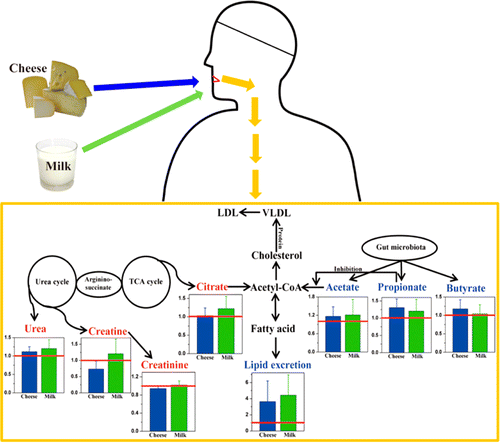A new piece in the 'French paradox' puzzle—cheese metabolism

Figuring out why the French have low cardiovascular disease rates despite a diet high in saturated fats has spurred research and many theories to account for this phenomenon known as the "French paradox." Most explanations focus on wine and lifestyle, but a key role could belong to another French staple: cheese. The evidence, say scientists in ACS' Journal of Agricultural and Food Chemistry, is in cheese metabolism.
Hanne Bertram and colleagues note that recent research on some dairy products' positive effects on health has cast doubt on the once-firm rule that saturated fats are bad for our hearts. For example, one study found that cheese reduced "bad" cholesterol when compared to butter with the same fat content, suggesting that high cheese consumption could help explain the French paradox. To further investigate this possible explanation, Bertram's team looked into how cheese gets digested.
The researchers compared urine and fecal samples from 15 healthy men whose diets either contained cheese or milk, or who ate a control diet with butter but no other dairy products. They found that those who consumed cheese had higher fecal levels of butyrate, a compound produced by gut bacteria. Elevated butyrate levels were linked to a reduction in cholesterol. Their results, they say, suggest a role for gut microbes and further shore up the connection between cheese and the French paradox.
More information: Metabolomics Investigation To Shed Light on Cheese as a Possible Piece in the French Paradox Puzzle, J. Agric. Food Chem., 2015, 63 (10), pp 2830–2839. DOI: 10.1021/jf505878a
Abstract
An NMR-based metabolomics approach was used to investigate the differentiation between subjects consuming cheese or milk and to elucidate the potential link to an effect on blood cholesterol level. Fifteen healthy young men participated in a full crossover study during which they consumed three isocaloric diets with similar fat contents that were either (i) high in milk, (ii) high in cheese with equal amounts of dairy calcium, or (iii) a control diet for 14 days. Urine and feces samples were collected and analyzed by NMR-based metabolomics. Cheese and milk consumption decreased urinary choline and TMAO levels and increased fecal excretion of acetate, propionate, and lipid. Compared with milk intake, cheese consumption significantly reduced urinary citrate, creatine, and creatinine levels and significantly increased the microbiota-related metabolites butyrate, hippurate, and malonate. Correlation analyses indicated that microbial and lipid metabolism could be involved in the dairy-induced effects on blood cholesterol level.
Journal information: Journal of Agricultural and Food Chemistry
Provided by American Chemical Society



















